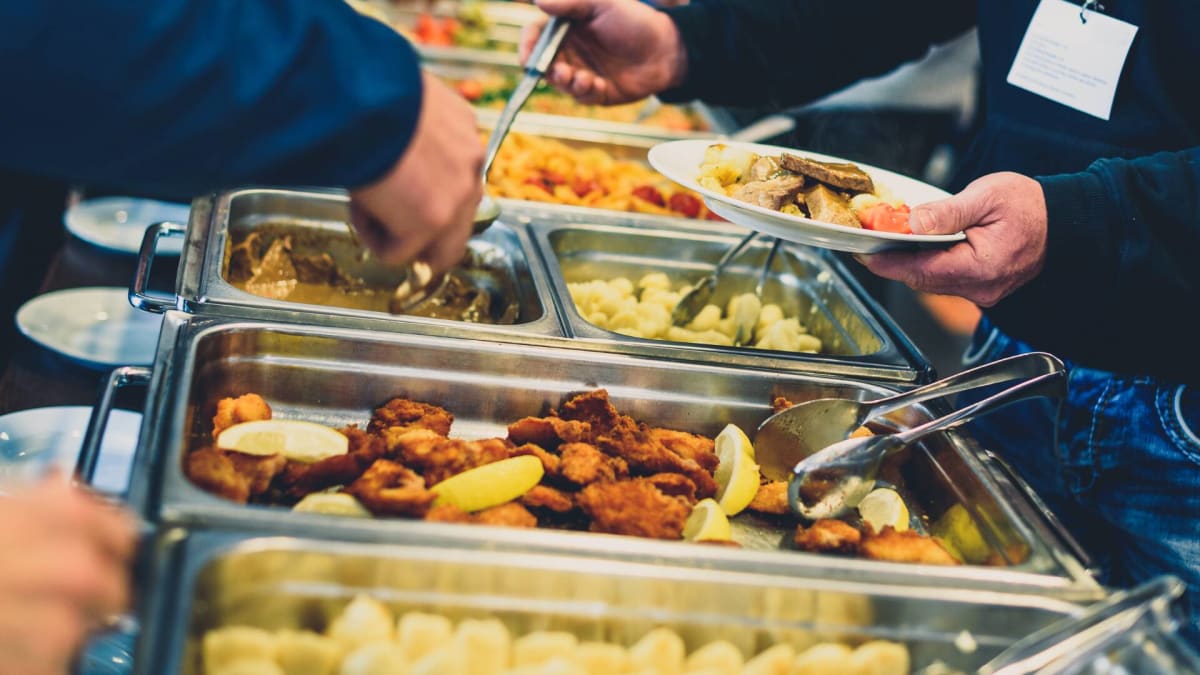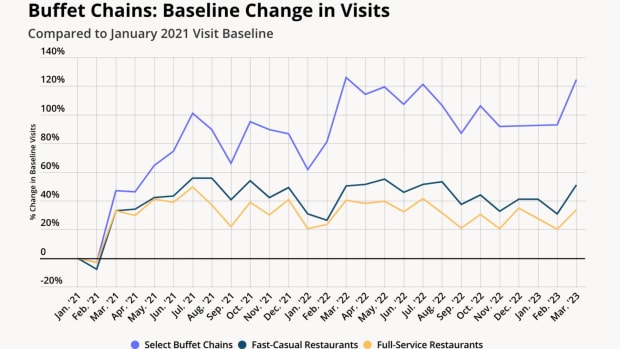
For most who grew up in North America, the all-you-can-eat buffet conjures up associations that are both positive and not-so-positive — some recall childhood visits to the restaurant in their suburb while others have memories of the unlimited crab legs they had on a trip to Vegas.
The buffet restaurant business in the U.S. brought in over $5.5 billion in 2022.
DON'T MISS: Las Vegas Strip Wants to Change This Part of its Reputation
The is a significant increase from, according to the numbers from Statista, the $3.98 billion that this sector of the restaurant business brought in 2020. As covid-19 started to spread, many establishments nixed the concept even after stay-at-home orders were lifted and restaurants were permitted to operate again — the buffet relies on people helping themselves to rows of laid-out food and it is difficult to maintain strict sanitary measures.

Here's Why The Buffet Concept Rebounded Post-Pandemic
Three years later, the buffet concept is rebounding back quickly. While the total dollars being spent at buffets are still lower than the $7.95 billion brought in pre-pandemic, it has grown steadily from between 2021 and 2022.
A national buffet chain with nearly 400 locations, Golden Corral saw its same-store sales grow by 14% from 2020 to 2023.
"We did the research on [customer sentiment] and it was just overwhelming that people wanted the buffet back," Golden Corral CEO Lance Trenary told Nation's Restaurant News. "That gave us the courage and enthusiasm to start growing and make this the absolute best buffet the U.S. has to offer."
The main reason for the increased demand, according to Trenary, comes down not just to customers missing the buffet experience but also value — lunch and dinner prices range between $10 and $16 and let customers fill their plates with a wide range of foods such as fried chicken, burgers and salads.
This is, to many, people significantly more affordable than going to a restaurant or even cooking at home — between March 2023 and 2022, the cost of groceries rose by 8.4% while dining out is now 8.8% more expensive.
"People are always telling us, 'We appreciate your value' and we kept the lid on pricing and worked hard to maintain that value without cutting quality or variety of buffet options," Trenary said.
Food Inflation Is A Problem. Are Buffets The Solution?
While this is a drop from a peak seen in the summer of 2022, food inflation is still being felt strongly by people of different income brackets. A recent study from Omaha-based insurance company Breeze found that 73% of U.S. households have cut back on restaurants and takeout while 57% bought different or fewer groceries to combat inflation.
The all-you-can-eat format is thus, for many, a way to squeeze as much value from a restaurant visit as possible. Recent data from traffic analytics company Placer.ai found that buffet restaurants saw significantly stronger traffic than the restaurant industry as a whole.
Combined visits to country's three biggest buffet chains — Golden Corral, Cicis and Pizza Ranch — were up 125% in March 2023 from a year ago while the number of visitors coming twice during one quarter was also up by more than 20% for all three chains.
"In 2022 when inflation began to dominate headlines, buffets’ baseline visit growth started to soar," writer Placer's authors. "Likely, diners choosing to eat out became increasingly concerned with getting value for money and buffets became a popular choice."







